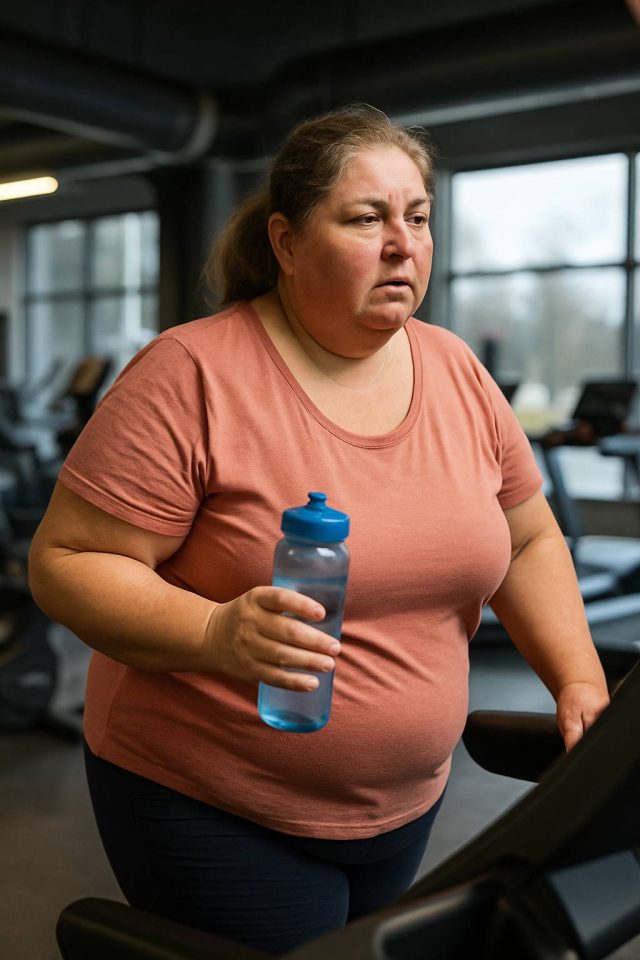What if the first step to managing obesity wasn’t a sprint, but a simple walk around the block? For patients struggling with obesity and Type 2 diabetes, the fitness journey often begins with high expectations and quick burnout. Instead, starting with obesity exercise plans that emphasize realistic goals can improve adherence, support sustainable weight loss, and enhance long-term outcomes.
In this article, we explore how to craft manageable fitness routines tailored to the needs and limitations of patients with obesity. With small steps and strategic planning, clinicians can help their patients succeed—without overwhelming them from the start.
Table of Contents
- The Importance of Setting Realistic Exercise Goals
- Tailoring Obesity Exercise to the Individual
- Leveraging Support Systems and Digital Tools
- The Role of Pharmacotherapy in Exercise-Based Plans
- Conclusion and FAQs
The Importance of Setting Realistic Exercise Goals
One of the most common pitfalls in obesity management is setting fitness targets that are too aggressive. While motivation is high early on, unsustainable goals often lead to frustration and eventual dropout. According to the CDC, even modest weight loss of 5-10% can significantly reduce cardiovascular risk and improve glycemic control.
Realistic obesity exercise goals should start with low-intensity activities, such as walking, chair aerobics, or short resistance training sessions. Instead of pushing patients toward 150 minutes of moderate exercise immediately, clinicians can encourage incremental increases—for instance, 10-minute walks three times a day.
Moreover, celebrating small wins is key. A weekly check-in to acknowledge progress, whether it’s steps walked or consistency in attendance, fosters motivation and accountability.
Tailoring Obesity Exercise to the Individual
No two patients are alike, and neither should their exercise plans be. Age, joint limitations, comorbidities, and even psychological readiness influence what type of activity is feasible.
Subheading: Functional Fitness vs. Aesthetic Goals
For many patients, the primary aim isn’t looking slimmer but improving mobility, stamina, and quality of life. Emphasizing functional fitness—being able to climb stairs without stopping or play with grandchildren—can be more motivating than aesthetic targets.
The American Diabetes Association recommends aerobic activity plus strength training. However, the application should be individualized. A younger patient might tolerate elliptical machines and weightlifting, whereas an older adult may benefit more from water aerobics and tai chi.
Incorporating patient preference is essential. If someone enjoys dancing, suggest a weekly Zumba class. If they prefer solitude, endorse home-based programs like the CDC’s Diabetes Prevention Program, or walking podcasts tailored to fitness levels.
Leveraging Support Systems and Digital Tools
Support networks can dramatically increase adherence to obesity exercise regimens. Whether it’s a walking buddy, a virtual coach, or a diabetes educator, having someone to check in with makes a difference.
Subheading: Community and Online Resources
Online forums like Health.HealingWell.com provide communities where patients can share struggles, tips, and success stories. These peer-driven platforms foster a sense of belonging and normalize setbacks.
Moreover, digital health tools are reshaping how patients manage their activity. Fitness trackers, like Fitbit or Apple Watch, help quantify progress and offer real-time encouragement. Apps such as MyFitnessPal or the CDC’s Active & Healthy program can help patients plan workouts, track meals, and set achievable milestones.
For clinicians, these tools offer valuable insight. Sharing device data during appointments helps create data-driven conversations around physical activity and goal-setting.
The Role of Pharmacotherapy in Exercise-Based Plans
Although exercise is crucial, it may not be sufficient alone, especially for patients with a high BMI or metabolic resistance. Pharmacological support can enhance the effectiveness of exercise-based interventions.
Branded drugs like Wegovy (semaglutide) or Zepbound (tirzepatide) have shown impressive weight loss results in patients with obesity and Type 2 diabetes. When paired with an obesity exercise regimen, these medications can help jumpstart progress and encourage continued adherence.
However, expectations should remain realistic. Medications are a support tool—not a substitute for movement. Clinicians should help patients understand how pharmacotherapy and exercise work synergistically. For instance, increased energy levels from early weight loss can make walking or strength training more feasible.
Evidence-based sources such as the Journal of Obesity and Diabetes Care underscore this integrated approach, showing better long-term weight management when physical activity and pharmacologic therapies are combined.
Additionally, consider referring readers to Diabetes in Control’s Treatment & Therapy articles for more detailed pharmacologic strategies.
Conclusion
Effective obesity exercise begins not with pushing harder, but by planning smarter. By setting realistic goals, personalizing routines, leveraging support, and combining exercise with pharmacotherapy, clinicians can help patients achieve sustainable health improvements. A slow, strategic start often leads to long-lasting change.
FAQs
What are realistic obesity exercise goals for beginners?
Start with short, low-impact sessions such as 10-minute walks, aiming for consistency over intensity.
How can patients stay motivated to exercise?
Tracking progress, celebrating small wins, and joining support groups or online forums can improve motivation.
Can exercise alone help manage obesity and diabetes?
Exercise plays a vital role, but combining it with nutrition and, when appropriate, medication yields better results.
Are fitness apps and trackers useful for obese patients?
Yes. They provide accountability, measure progress, and offer encouragement, which supports habit formation.
When should pharmacotherapy be considered in obesity treatment?
For patients with a high BMI or limited exercise tolerance, drugs like Wegovy or Zepbound can be useful when combined with lifestyle changes.
This content is not medical advice. For any health issues, always consult a healthcare professional. In an emergency, call 911 or your local emergency services.
